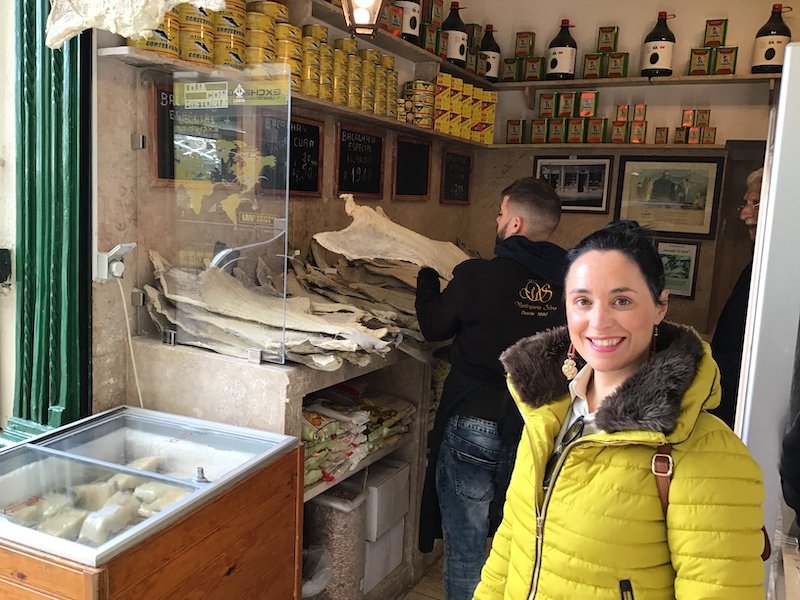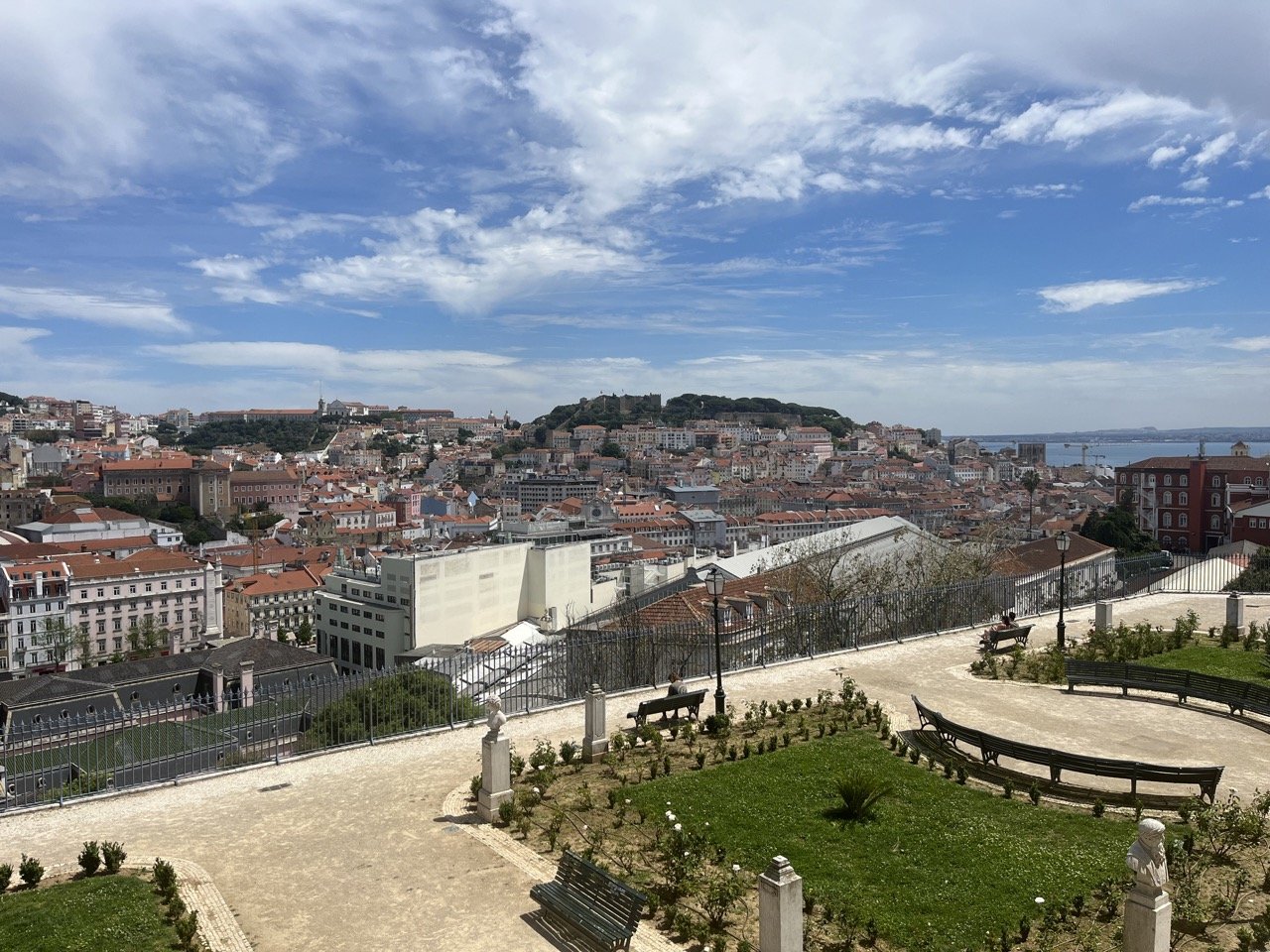A Local’s Guide to Avenidas Novas, Lisbon
Please note: some of the links in this article are affiliate links. If you book using one of them, we’ll earn a small commission. All of our info is free to read and free of ads, so we appreciate it!
Avenida da Liberdade near Marques de Pombal square on a rainy day
Avenidas Novas is a modern area of Lisbon featuring wide avenues and elegant, contemporary buildings. Stretching from Marquês de Pombal to Campo Grande, it's more cosmopolitan than other older neighborhoods in the city.
Its large office blocks and apartment buildings give it the feel of a busy business district that is also a comfortable place to live. It's a favorite with locals looking for an urban lifestyle and good access to services.
On these streets, people cross paths on their way to the office, cafes fill up at lunchtime for a quick meal, and parents rush to pick up their children from school at the end of the day.
The area is also home to several large shopping centers, coffee shops, and trendy restaurants, making it a great place to dine. If you like art, you can find emblematic museums such as the Museu Calouste Gulbenkian, one of Lisbon's cultural gems.
It doesn't have the historical appeal of other parts of the city. On the contrary, Avenidas Novas is a great place to experience a more contemporary side of Lisbon.
The Avenidas Novas area is well connected by public transport. Several metro stations, including Marquês de Pombal, São Sebastião, and Campo Grande, make it easy to get around. Buses and the city's cycle paths also link this neighborhood to other parts of Lisbon, making it an ideal base if you’re in town.
More Portugal travel info:
If you could use some help planning your Portugal itinerary, schedule a Portugal travel consultation with one of our Local Experts!
Table of contents
A brief history of the neighborhood
What to see and do
Where to stay
Restaurants to try
Tours of Lisbon with Ana Sofia
If you’re looking to explore Lisbon with a local, reach out to Ana Sofia for a guided tour!
Ana is a Lisbon native and she’s been running walking tours, food tours, and day trips to places like Sintra, Évora, and Óbidos for over a decade.
A fully licensed guide with years of university study under her belt, Ana has the knowledge to keep history buffs happy, but still always makes her tours light, entertaining, and fun.
A brief history of Avenidas Novas
Avenidas Novas was born at the end of the 19th century, at a time when the city was beginning to grow out of its historic core.
At first, it was a residential neighborhood for the upper class, but over the course of the 20th century, it opened its doors to businesses, commerce, and services.
Today, Avenidas Novas is a very important business and commercial center, home to a wide variety of corporate offices, financial institutions, and international companies.
The grand houses of the past have been replaced by top hotels, high-quality stores, and modern apartment buildings, giving this neighborhood a more sophisticated feel.
What to see and do here
A view over Lisbon from the viewpoint in Parque Eduardo VII
Apart from the residential buildings and offices that receive employees from all over town and further afield, Avenidas Novas has some surprising places to visit.
One of them is Praça Marquês de Pombal, the city's most famous traffic circle.
The area is surrounded by hotels and big company headquarters but somehow works its magic. It becomes a scene of celebration every time one of the local soccer clubs, such as Benfica or Sporting, wins the national championship. Fans often say at the beginning of the soccer season: "This year, Marquês is ours!"
It may be so sought after because it's one of the gateways to Parque Eduardo VII, the largest green space in Lisbon's center and home of the Estufa Fria, a greenhouse containing more than 300 species of plants from all over the world.
And since we're talking about gardens, don't miss the one on Fundação Calouste Gulbenkian, in Avenida de Berna. You can also see exhibitions, conferences, and concerts here and visit the brand-new Modern Art Center, set in an incredible building redesigned by Japanese architect Kengo Kuma.
Speaking of concert venues, also in Avenidas Novas, more precisely on Avenida da República, you'll encounter Campo Pequeno. This centenary bullring has very little to do with bullfighting nowadays, hosting shows of a different nature, ranging from music concerts to stand-up comedy.
There are also no bulls in Jardim Zoológico de Lisboa, em Sete Rios. But the zoo does have around 2,000 animals of 300 species, including mammals, birds, reptiles, and amphibians, that will make the day if you're traveling with children.
A last visit suggestion goes to art lovers. If that's your case, head to Casa-Museu Dr. Anastácio Gonçalves in the Saldanha area to see nearly 3,000 works of art ranging from 19th and 20th-century Portuguese paintings to Chinese porcelain and even Portuguese furniture.

Spend a half-day wandering Lisbon's maze of twisting alleys while also trying all the city's best local treats with our favorite guide, Ana Sofia!
Where to stay
EPIC SANA Lisboa Hotel - A five-star hotel near Parque Eduardo VII featuring a rooftop pool, a spa, and a gym ($300).
H10 Duque de Loulé — Occupying an 18th-century building, this hotel stands out with its blue-and-white tile accents. Many rooms offer lovely city views ($225).
ibis Lisboa José Malhoa — One of the cheapest alternatives in the area, this hotel offers modern rooms, a restaurant, and a bar. Pets are allowed upon request ($100).
Sublime Lisboa — This former palace, which once housed the restaurant of Simone de Oliveira, a well-known Portuguese actress and singer, offers 15 rooms, each unique and elegantly decorated. (from $200)
Hotel White Lisboa — For those who enjoy a more minimalist atmosphere, this hotel offers spacious, well-lit rooms and an outdoor pool. (from $100)
Turim Saldanha Hotel — With a prime location just minutes away from the subway station, you'll find modern-designed rooms for a comfortable stay. (from $100)
Restaurants to try
Fogo by Alexandre Silva — The well-known chef Alexandre Silva is behind this restaurant, where everything is cooked over a wood fire, from oysters to prawns and steaks.
Lota d’Ávila — Fresh fish and seafood are the specialities at this colourful restaurant near Fundação Calouste Gulbenkian.
Galeto — Open since 1966, this traditional restaurant serves everything from breakfast to late-night meals.
Pastelaria Versailles — This century-old spot stands out with its classic decor. It is renowned for its pastry selection, but they also serve meals and homemade ice cream.



Private guided tours with Ana










